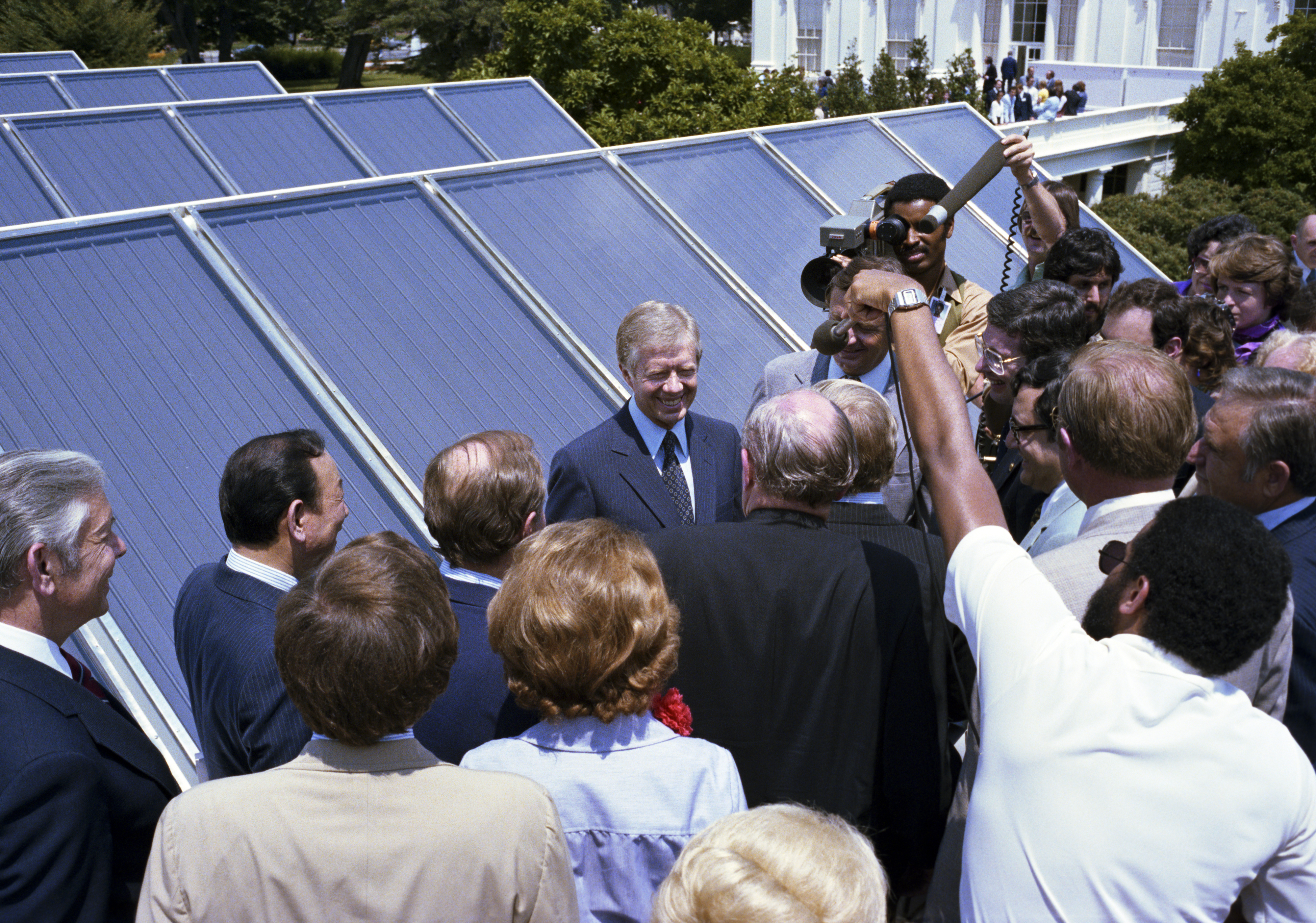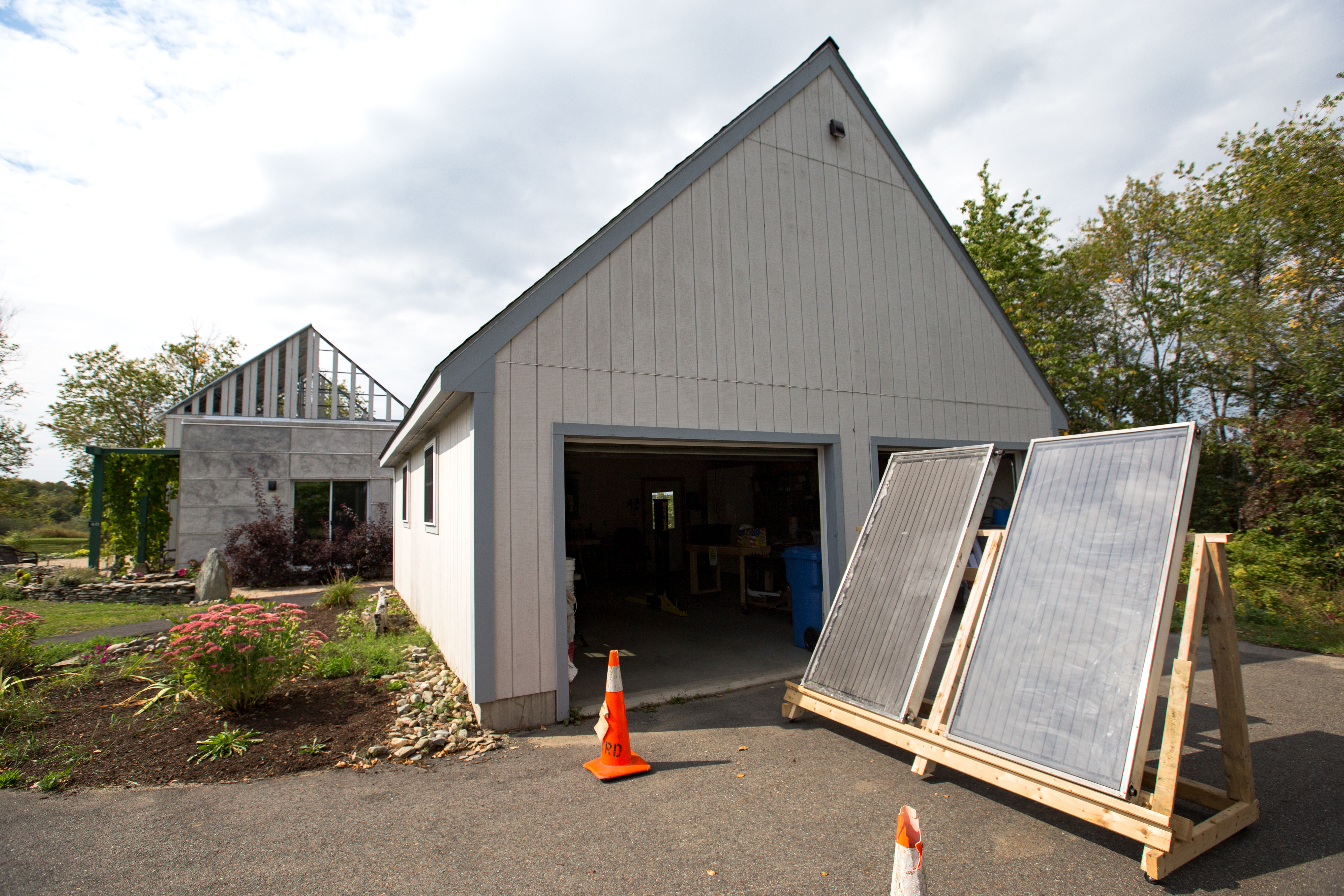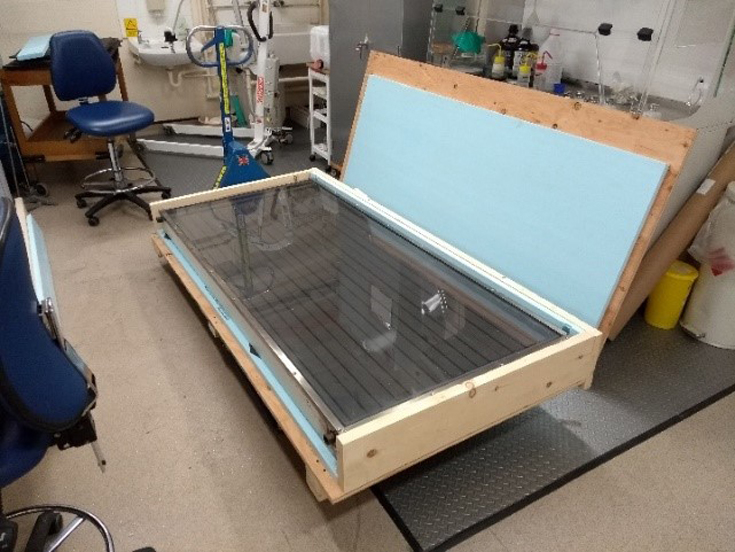Objects are political. If so chosen, they can be slaves in the service of power, strategically deployed to shift opinions, influence voters and change lives. On 20 June 1979 the Democratic President of the USA Jimmy Carter used his great rhetorical skills to turn some pretty unremarkable solar water heaters placed on the roof of the White House into political pawns:
‘Solar energy will not pollute our air or water. We will not run short of it. No one can ever embargo the Sun or interrupt its delivery to us. But we must work together to turn our vision and our dream into a solar reality. … I dedicate, this afternoon, this solar heater, harnessing the rays of the Sun to the benefit of those who serve our country at the White House.’

The 32 solar-thermal panels installed on top of the East Wing of the White House on that sunny afternoon were a public symbol of Carter’s faith in ‘the power of the sun to enrich our lives as we move away from our crippling dependence on foreign oil.’
Although not technically ground-breaking in their working processes, these panels were highly politicised symbols of the awareness and take-up of alternative sources of energy to traditional fossil fuels. They sat at the heart of 1970s western attitudes to ‘green’ energy and the rise of alternative fuels, representing the social and political context of solar power and the importance of energy resource in late-twentieth century global politics and economics.
Throughout his term in office (1977-1981), Jimmy Carter was an advocate of energy conservation and renewable energy technologies. While delivering his 1977 ‘Moral Equivalent of War’ speech (in which he outlined the principles of a plan to reduce America’s reliance on imported fuels by, among other means, increasing the use of solar energy) he famously appeared on television wearing a jumper – the White House heating had been turned right down in a public demonstration of his own commitment to the cause.

In 1978, Carter declared a national ‘Sun Day’ on 3 May every year, committing to developing an aggressive policy to harness solar and renewable sources of energy.
On a tour of the Solar Energy Research Institute in Colorado, he vowed to install a solar water heater on the roof of the White House and pledged a large increase in funding for solar energy research. True to his promise, Carter had a set of solar-thermal panels installed on the roof of the White House later that year.
The panels incorporated a flat plate solar collector, which used the sun’s energy to heat water, reducing the need for boiler use. Sun light shone onto the absorber plates, heating them up, and transferring this solar energy to water passing behind.
Working perfectly throughout Carter’s remaining years as President, the panels were in use until 1986, when Republican President Ronald Reagan – a sceptic of the energy crisis and of renewable energies – chose not to have them reinstalled after a rooftop resurfacing.
The panels were then stored in a federal warehouse until their acquisition by an environmental college in Maine in 1991. The college installed 16 of the panels on the cafeteria roof, with the rest put into storage.
Some of the remaining panels have now been acquired by museums – including the Jimmy Carter Presidential Library, the Smithsonian Institution, and the Science and Technology Museum in China. One of the panels was displayed at the Science Museum’s autumn 2018 exhibition, The Sun: Living With Our Star.

The fate of the panels is even more poignant by the fact that on the day of their installation on the White House roof President Carter stated: ‘A generation from now, this solar heater can either be a curiosity, a museum piece, an example of a road not taken, or it can be just a small part of one of the greatest and most exciting adventures ever undertaken by the American people.’
Learn more about humanity’s relationship with our nearest star in this blog series, based on our recent exhibition The Sun: Living With Our Star.